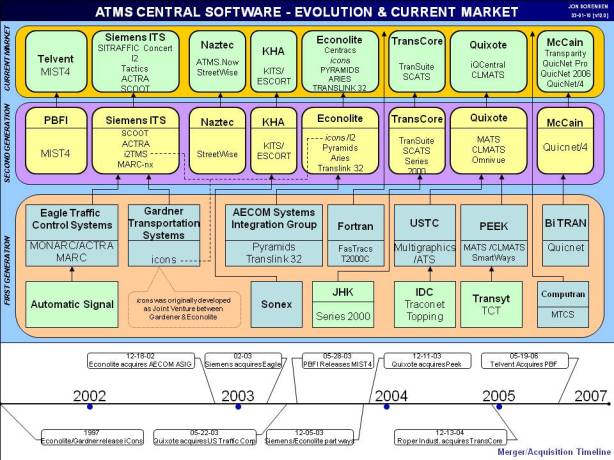 I originally offered up initial thoughts on “Cloud-Computing and ITS” as part of an article I had prepared back in 2008. Since then, “the cloud” has made some notable in-roads in Intelligent Transportation Systems (ITS). As a result, I thought it would be beneficial to review some of the progress made, and industry buy-in that has occurred since the original analysis.
I originally offered up initial thoughts on “Cloud-Computing and ITS” as part of an article I had prepared back in 2008. Since then, “the cloud” has made some notable in-roads in Intelligent Transportation Systems (ITS). As a result, I thought it would be beneficial to review some of the progress made, and industry buy-in that has occurred since the original analysis.
To re-cap, the cloud computing model essentially outsources IT infrastructure, and in some cases ITS applications (Software as a Service, or SAAS), to a third-partys (external to an operating agencies domain). End-users simply connect to data, information and/or applications, which originally resided on local servers and managed by local applications, via a web interface.
The cloud-computing model significantly reduces upfront capital costs, as well as recurring operations and maintenance costs associated with IT infrastructure, and greatly expedites an agency’s ability to implement new applications and services. This also allows transportation agencies to focus on transportation, and minimize resources required to operate and manage IT infrastructure, an extremely attractive option in tight economic conditions (such as those we have experienced since 2008). Another huge advantage to the cloud computing platform is the ability to modify computing resources in real-time. Cloud computing implements an elastic infrastructure ideal for real-time scaling, providing network and computing capacity on the fly, or enabling “capacity on demand”, also at greatly reduced cost.
Cloud-based applications allow for centralized applications, that can be managed (updated and distributed), from a central location, within a highly resilient and redundant infrastructure. Top tier cloud platforms have implemented multiple layers of redundancy and security, thus providing a more reliable platform than those typically constructed, operated and maintained at the public agency level. In addition, applications in the cloud can be updated more smoothly and more frequently without having the need to redistribute to each client, or cause disruption to individual customers. Finally, cloud computing is establishing a technology framework that enables the removal of many silos and motes that exist between transportation systems, applications, agencies and and the end-users (travelers).
Although high-end commercial cloud services, such as Amazon’s Elastic Compute Cloud (Amazon EC2) and Microsoft’s Windows Azure are extremely robust, and in most cases nearly impossible to crash, the vulnerabilities on the local side (end user) remain [Note: Amazon’s EC2 did experience a significant outage on 4/21/2011] . Loss of internet connection at the user level will preclude access to the data, information, application or supporting infrastructure. In some cases, the use of a cloud framework lessons the accessibility to data. Data and information residing in the cloud may be subject to privacy and security concerns, should the cloud provider be vulnerable to outside attacks.
Several transit vendors, most notably those providing CAD/AVL and traveler information services have already begun utilizing the cloud. Products such as TeloTrack provide real-time, web-based CAD/AVL for transit systems. Data is directly aggregated by the vendor through a central (cloud-based) application, and accessed by the operating agency via the web. Cloud computing services have shown to be ideal for transportation systems that are variable in nature, most notably traveler information systems. During special events, weather events or emergency situations, the platform allows for real-time scaling to deal with user demand spikes. In some cases there is a public-facing web interface as well, also subject to usage spikes. The cloud is probably the most ideal vehicle for assisting in the mitigation of system silos surrounding data and information resources. The cloud can quickly and efficiently implement a centralized data warehouse, free of technological and information-architecture constraints typically encountered during the fusion of data and information from multiple transportation agencies. The cloud framework is an ideal framework for managing data and information exchanges for connected vehicles, however, potential latencies and reliability of network connectivity reduce the overall functionality of this model with regards to connected vehicles. The framework will be ideal for data collection, aggregation and warehousing, as well as provide a resource for monetization and third-party application development.
Further reading:
Cloud Computing for Agent-Based Urban Transportation Systems



